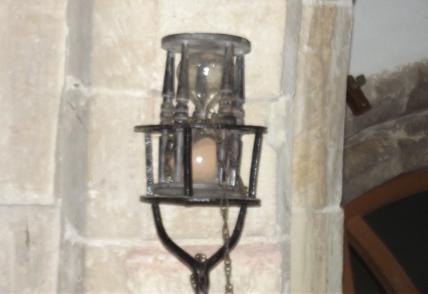Keyingham St Nicholas
church web site
The Sixteenth Century and the Reformation
By 1535, having rejected the authority of the Pope during the previous year, King Henry VIII had established his position as Supreme Head of the Church in England. He ordered his commissioners to conduct a financial survey of the income and assets of churches and monasteries, with a view to extracting money for government use. Any mention of the Pope had to be removed from prayer books, and parish priests were ordered to declare their support for Henry as Head of the Church. It was soon clear that it was the King's intention to suppress at least some of the monasteries. People in the north were not all in favour of this and, in 1536, a popular rebellion involving some 40 000 men, known as the Pilgrimage of Grace, gathered in York and declared their intention of protecting the Church against the King. The first stage of the rebellion ended in negotiations with the Duke of Norfolk, with promises that the pilgrims' concerns would be taken into account by the King, but further revolts in the following year led to many executions. By 1539, the suppression of the monasteries was gathering pace, and Meaux Abbey was looted and effectively demolished. Either on account of its connection with Meaux, or because it remained a shrine to St Philip Ingleberd, the Church of St Nicholas suffered particularly brutal treatment. Nothing was to remain of the tomb of St Philip. No mediaeval stained glass survived from the windows, whereas many other churches have retained some. An ornate carved rood screen, between the nave and the chancel, was destroyed. St Philip’s well was broken up and St Philip’s Cross was shattered, only the base remaining. The Church in Keyingham became the property of the King, though administrative control passed in 1545 to the Archbishop of York.
Henry died in 1547 and was succeeded by his nine-year-old son Edward VI. Despite the break with Rome, Henry had never rejected Catholic ceremony but, during Edward's brief reign, under the influence of Protestant advisers, royal injunctions and Acts of Parliament moved the English Church towards Protestantism. Paintings and images were to be removed from churches, stone altars were to be replaced with wooden tables, masses for the dead, private confessions to priests, and the worship of the Virgin Mary and of other Saints was to cease. Priests were now able to marry, and the 68-year-old Archbishop Holgate of York set an example by taking a 24-year-old wife. Edward died in 1553, before he reached the age of sixteen, and was succeeded by his half-sister Mary, a Catholic. During her reign, a good number of Protestant leaders were executed, including the former Archbishop of Canterbury, Thomas Cranmer, who was burned at the stake. In 1558, Mary also died and was succeeded by her half-sister Elizabeth, who was to reign until 1603. Though she was responsible for the execution of several hundred Catholics, it may be said that Elizabeth tended to seek the middle way between Catholic and Protestant extremes. The Church was able to evolve towards a more recognisably Anglican theology. There were changes in the interior of St Nicholas. The congregation no longer had to stand through services, as box pews began to be installed. A Bible in English was made available for consultation. Although the Queen herself disliked sermons, it seems that they became longer and a more important part of the service. It was during this period that an hour glass was installed near to the pulpit, to ensure that sermons were of a reasonable length. The sermon did not end when the sand ran out, for the preacher turned the glass over and continued for whatever time he judged necessary. The original fitting remains, and is said to be the only one in a Yorkshire church, though the hour glass is a replacement bequeathed by a collector in about 1920.
Next: Nineteenth-Century Restoration
Back to the History navigation menu

The hour glass near the pulpit